What Are Cannabinoids?
What are cannabinoids?
The word cannabinoid refers to every chemical substance, regardless of structure or origin, that joins the cannabinoid receptors of the body and brain and that have similar effects to those produced by the Cannabis Sativa plant. The three types of cannabinoids that people use are recreational, medicinal and synthetic.
Research has found that the cannabis plant produces between 80 and 100 cannabinoids and about 300 non-cannabinoid chemicals. The two main cannabinoids are delta-9-tetrahydrocannabinol (THC) and cannabidiol (CBD). The most commonly known of the two is delta-9-tetrahydrocannabinol (THC), which is the chemical that is responsible for the psychoactive effects of cannabis.
*From The Alcohol and Drug Foundation (ADF) of Australia
Primary Cannabinoids
1. THC - Tetrahydrocannabinol
THC tends to get the most attention as the most plentiful cannabinoid in the modern cannabis plant, and the one that causes the well-known psychoactivity or “high” associated with cannabis. It’s also praised for its strong medicinal effects, which continues to be utilized by patients all over the world.
How is THC used and what does it help with?
- One common use of THC is for pain relief. In fact, pain is the most common reason patients use cannabis, and THC plays a huge role in this. While many cannabinoids offer pain relief, some studies show that THC can bring the highest level of pain relief—beating out alternatives like CBD. This makes it a very popular option for those seeking pain relief.3
- Others find THC helpful for its mood-boosting abilities. Some animal studies show that THC can act similarly to an antidepressant, uplifting a depressed mood and calming anxiety. Regular, long-term use though may actually increase the risk one’s of anxiety or depression.4
- In addition, THC has been shown to help with issues like nausea, muscle spasms, and sleep disorders, along with other conditions. It is also a powerful anti-inflammatory agent, neuroprotective agent, and antioxidant. THC can even shift your metabolism to help avoid weight gain, as studies suggest cannabis users tend to eat more but weigh less than non-users.5 6
- Of course, for some, THC’s psychotropic properties can be a big deterrent to use. Side effects like mental confusion, short term memory loss, shifts in time perception, rapid heart-rate, lowered coordination and anxiety can make it an uncomfortable experience for some, especially at higher doses. Still, these effects only happen for some and often lessen as tolerance to THC builds. For many, these side effects can also be reduced by combining THC with other cannabinoids or terpenes.
Earlenbaugh, E. (2021, October 18). Cannabinoids and their effects. The Cannigma. Retrieved from https://cannigma.com/plant/cannabinoids-and-their-effects/
2. CBD – Cannabidiol
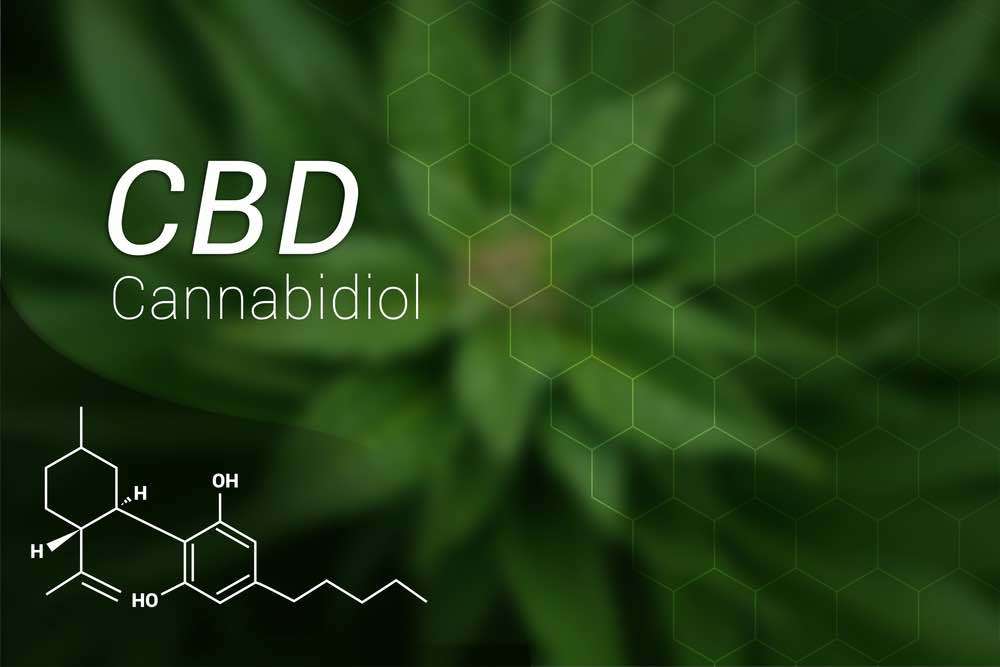
CBD is another common cannabinoid, and one that has gained a lot of notoriety in recent years as the “non-psychoactive cannabinoid.” Despite the hype, it turns out that CBD is psychoactive, because it can alter mood by easing anxiety and depression. But it doesn’t have the same kind of disorienting effects as THC like mental confusion, shifts in time perception, short-term memory loss or lack of coordination. Most CBD users report that their mind feels and functions normally, though some people do report feeling different.
In addition, the World Health Organization recently reported that CBD can help treat epilepsy, Alzheimer’s disease, cancer, psychosis, Parkinson’s disease, and other serious conditions. The organization also concluded that CBD is exceptionally safe to use, having no known negative side effects or potential for addiction. This cannabinoid is under broad investigation for the treatment of many diseases, but so far sufficient evidence only exists for a few conditions, including pediatric seizure disorders.
Earlenbaugh, E. (2021, October 18). Cannabinoids and their effects. The Cannigma. Retrieved from https://cannigma.com/plant/cannabinoids-and-their-effects/
2. THCV – Tetrahydrocannabivarin
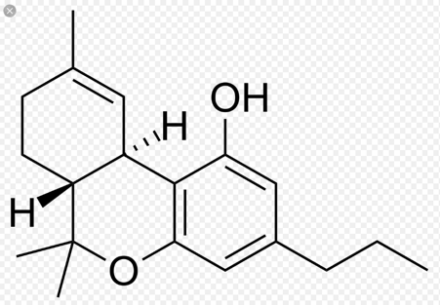
Another popular cannabinoid is tetrahydrocannabivarin (THCV), though it is much less common than THC or CBD. This cannabinoid has a lot in common with its chemical cousin THC, but has a slightly different chemical structure and effect profile. This alteration in chemical structure means that, unlike THC, it may function as more of a blocker than an activator of CB1, but the data around this is conflicting.
Reported to produce a relaxing, euphoric, and energizing high, THCV may help block the anxiety-inducing effects of THC when the two are used together. It also holds promise as a weight-loss aid—by reducing appetite and boosting metabolism, and as diabetes treatment by helping with blood sugar control and insulin production. To add to this, THCV may help promote new bone cell growth and prevent weakening bones, and can even act as a neuroprotectant in conditions like Parkinson’s disease.8
Earlenbaugh, E. (2021, October 18). Cannabinoids and their effects. The Cannigma. Retrieved from https://cannigma.com/plant/cannabinoids-and-their-effects/
3. CBDV – Cannabidivarin
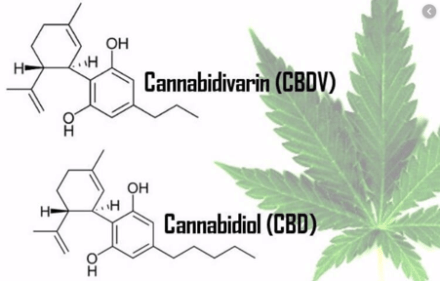
This cannabinoid has a similar structure to CBD and is also non-intoxicating. Researchers discovered it in 1969, but it was subject to limited research until very recently. CBDV is known for its anticonvulsant effects, which occur through the activation of an ion channel in the peripheral and central nervous system called TRPV1. It acts as a receptor and plays a role in the modulation of pain, as well as in its transmission.
You will find higher levels of CBDV in strains with a lot of CBD. Primitive landrace strains in the Northern Indian mountains should also contain a relatively large amount of this cannabinoid. Please note, CBDV is not water-soluble in significant amounts, and its bioavailability rate is below 6% in humans when consumed orally.
One of the most likely benefits of CBDV is the reduction of epileptic fits. A study by Amada et al., published in PeerJ in November 2013, found that it reduced the expression of genes linked to epilepsy. Other research suggests that CBDV has a potent anticonvulsant effect on a range of epileptic seizures.
CBDV is another non-intoxicating cannabinoid that is being researched for its neurological effects, as well as the potential treatment of epilepsy.
*Information modified, but derived from WayofLeaf.
4. CBG – Cannabigerol
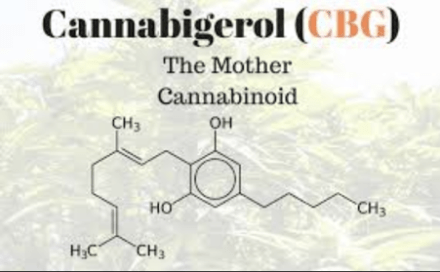
CBG is a common cannabinoid found in essentially all cannabis plants. Like all of the cannabinoids mentioned so far, CBG is produced as CBGA. All the primary cannabinoids are created from CBGA. This is how CBGA got its nickname of “mother of all cannabinoids.” CBG has also been dubbed a non-psychoactive cannabinoid, but similar to CBD this probably isn’t accurate. The limited science we do have suggests CBG is active at a number of non-cannabinoid receptors.
Early research shows CBG can have potential for a wide range of issues. CBG is an effective pain reliever and an anti-inflammatory agent. It can act as a neuroprotectant against degeneration in conditions like Huntington’s disease and has been shown to promote neurogenesis, the regrowing of new brain cells. Studies show CBG may help fight against colorectal, prostate and oral cancer.9
CBG can help in reducing intraocular pressure in glaucoma, act as an antibacterial against resistant bacterial strains like MRSA, help with psoriasis and other skin conditions, and may even aid in regulating emotions like an antidepressant.10
Earlenbaugh, E. (2021, October 18). Cannabinoids and their effects. The Cannigma. Retrieved from https://cannigma.com/plant/cannabinoids-and-their-effects/
5. CBC – Cannabichromene
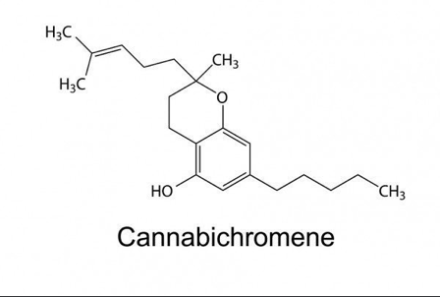
Overall, CBC is the third most common cannabinoid in weed. Researchers first discovered cannabichromene in 1966.
It directly interacts with the ECS’ CB1 and CB2 receptors but also works with other receptors such as TRPA1 and TRPV1. Intriguingly, CBC shares the molecular formula of CBD and THC, which is C21H30O2. However, the chemical properties and atoms differ in all three compounds. In case you were wondering, CBC is non-intoxicating.
According to data from the 1970s, you will find massive levels of CBC in landrace strains from India. It is more prevalent than CBD in a surprising number of strains. CBC also works well when combined with other cannabinoids in what is called the ‘entourage effect.’
As for its medical benefits, a study by Nakajima, Nakae, and Yasukawa, published in the Journal of Pharmacy and Pharmacology in May 2013, studied the effects of cannabinoids on mice with inflammation and skin tumors. The team discovered that CBC helped encourage new cell growth.
There is more CBC than CBD in many marijuana strains.
*Information modified, but derived from WayofLeaf.
---------
CBC is another cannabinoid made from CBG with some important effects. Like CBN, CBC is a powerful antibiotic, shown to help with infections that are resistant to other treatments.
CBC might also help protect the brain from neurodegenerative conditions like Alzheimer’s. Studies show that CBC not only protects the brain, it could encourage your brain to grow new brain cells, at least if you’re a rat taking CBC.
Earlenbaugh, E. (2021, October 18). Cannabinoids and their effects. The Cannigma. Retrieved from https://cannigma.com/plant/cannabinoids-and-their-effects/
6. CBN – Cannabinol

Cannabinol (CBN) is known best for being the cannabinoid that is created when THC ages–it is a natural byproduct of THC degradation. In fact, as THC ages a significant amount it can naturally convert to CBN–up to 25% per year. Some CBN can also be formed when THC is heated to high temperatures, like when smoking. While this might not sound appealing, it has so many medicinal benefits that some prefer older cannabis because it often has high CBN levels. Depending on the effects you are seeking, CBN could be the ideal cannabinoid for you.
CBN is considered to be sedative by many, however there is little research to support this. Pure CBN doesn’t seem to have a sedative effect, but when combined with THC, the combination was found to be very sedative. This makes cannabis high in CBN and THC a great option for insomnia and could help explain why smoking a joint feels different than vaping some herb.11
Other research shows CBN can stimulate appetite, ease glaucoma, and work as a powerful antibiotic, which all makes sense given its close relation to THC.
CBN may also be helpful for people with ALS. In one study, researchers were able to delay ALS onset for mice using CBN, but human studies are needed to confirm this potential use.12
Earlenbaugh, E. (2021, October 18). Cannabinoids and their effects. The Cannigma. Retrieved from https://cannigma.com/plant/cannabinoids-and-their-effects/
CBN is not produced naturally in the cannabis plant but is rather the result of the breakdown of THCA over time.
7. CBDA – Cannabidiolic Acid
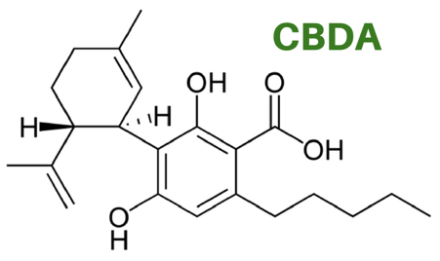
CBDA is the acidic precursor to CBD and is also non-intoxicating. You will find CBDA in raw hemp or any raw marijuana strain high in CBD, such as Charlotte’s Web. As is the case with THCA and THC, CBDA becomes CBD when decarboxylated.
For a long time, researchers believed that CBDA, and therefore raw hemp, had no medical benefit until it was turned into CBD. However, CBDA does have an impact on the body. Like CBD, it does not directly interact with the ECS’s receptors. Instead, it activates the 5-HT1A serotonin receptors. As you may know, serotonin is a neurotransmitter type found in the brain. It regulates anxiety, sleep, nausea, anxiety, and mood.
A study by Shbiro et al., published in the October 2017 edition of European Neuropsychopharmacology, found that CBDA elicited antidepressant effects on rodents at doses up to 100 times lower than CBD! The likely reason is the increased serotonin levels it produces.
CBDA potentially has impressive antidepressant properties, even more so than CBD!
*Information modified, but derived from WayofLeaf.
8. CBGA – Cannabigerolic Acid
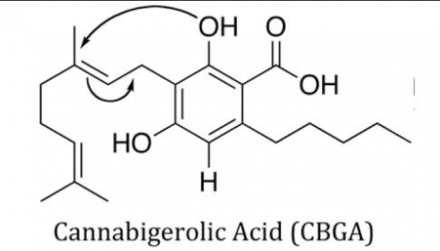
CBGA is the single most crucial cannabinoid as it is the precursor of all cannabinoids found in the marijuana plant. It is often called ‘the mother cannabinoid’ because, without it, there would be no other cannabinoids! Imagine a world where weed didn’t get you high or provide you with therapeutic benefits. You can thank CBGA for that not being the case.
It is a non-intoxicating cannabinoid and seems to act as a low-affinity antagonist to the CB1 receptors. Researchers continue to study whether CBGA impacts the CB2 receptors. The majority of medicinal marijuana strains contain CBGA that isn’t quickly converted into other cannabinoids.
Once you heat the plant material, however, CBGA turns into CBD, which is utilized by the body. If you find a strain high in CBGA, you’ll be able to convert it into usable CBD. Hemp probably contains a reasonable degree of CBGA because of a recessive gene seldom found in other marijuana strains.
At present, there is minimal research on CBGA’s medical benefits. Instead, it is being researched for its role as the main building block in cannabinoids.
Without CBGA, there would be no medicinal benefits of cannabis whatsoever!
*Information modified, but derived from WayofLeaf.
The Endocannabinoid Sytem
What is the Endocannabinoid System?
The ECS comprises a vast network of chemical signals and cellular receptors that are densely packed throughout our brains and bodies. The "cannabinoid" receptors in the brain — the CB1 receptors — outnumber many of the other receptor types on the brain. They act like traffic cops to control the levels and activity of most of the other neurotransmitters. This is how they regulate things: by immediate feedback, turning up or down the activity of whichever system needs to be adjusted, whether that is hunger, temperature, or alertness.
To stimulate these receptors, our bodies produce molecules called endocannabinoids, which have a structural similarity to molecules in the cannabis plant. The first endocannabinoid that was discovered was named anandamide after the Sanskrit word ananda for bliss. All of us have tiny cannabis-like molecules floating around in our brains. The cannabis plant, which humans have been using for about 5,000 years, essentially works its effect by hijacking this ancient cellular machinery.
*From Harvard Health Publishing

Introductory Library Resources
Marijuana and the Cannabinoids by
Call Number: Online Resource (SpringerLink)ISBN: 1588294560Publication Date: 2006Although primarily used today as one of the most prevalent illicit leisure drugs, the use of Cannabis sativa L., commonly referred to as marijuana, for medicinal purposes has been reported for more than 5000 years. Marijuana use has been shown to create numerous health problems, and, consequently, the expanding use beyond medical purposes into recreational use (abuse) resulted in control of the drug through international treaties. Much research has been carried out over the past few decades following the identification of the chemical structure of THC in 1964. The purpose of Marijuana and the Cannabinoids is to present in a single volume the comprehensive knowledge and experience of renowned researchers and scientists. Each chapter is written independently by an expert in his/her field of endeavor, ranging from the botany, the constituents, the chemistry and pharmacokinetics, the effects and consequences of illicit use on the human body, to the therapeutic potential of the cannabinoids.
